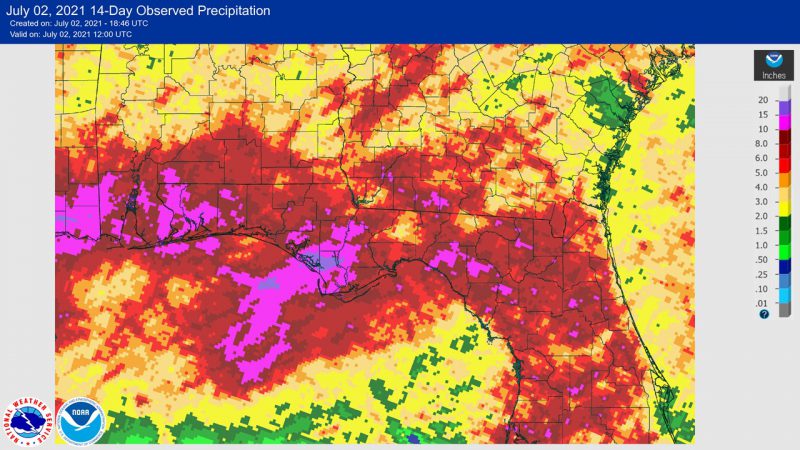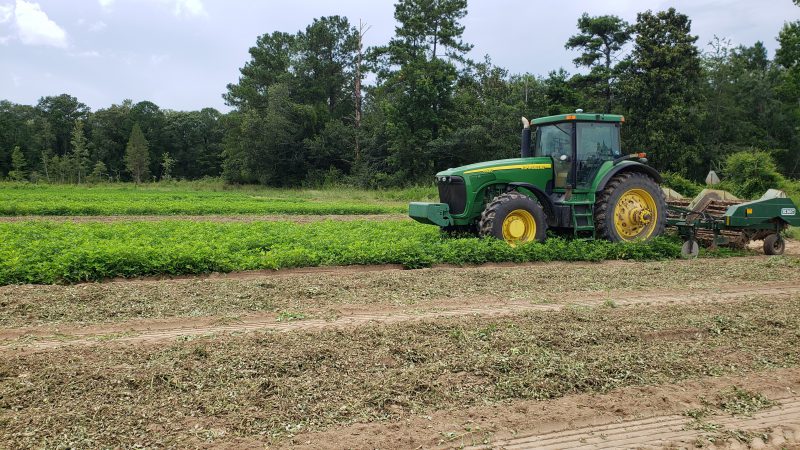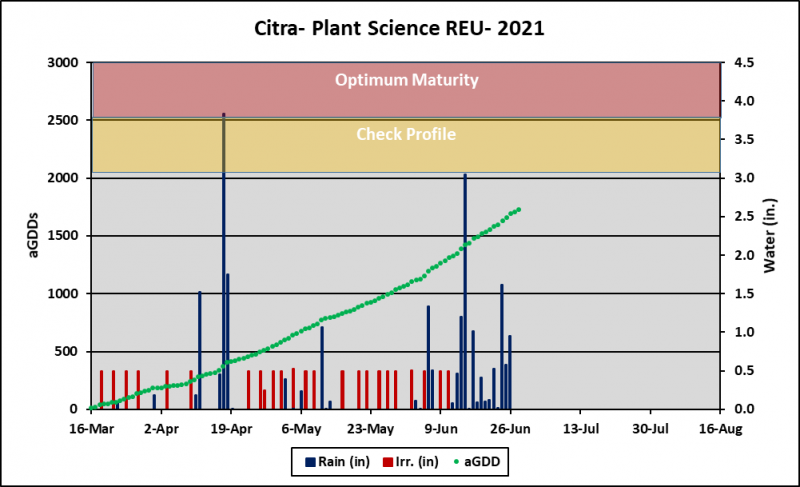Mark Mauldin, Ag & Natural Resources Agent Washington County, Ethan Carter, Regional Crop IPM Agent, Dr. Barry Tillman Peanut Breeder UF/IFAS NFREC, and Camila Ichazo

Over the last two weeks there has been considerable rainfall accumulation throughout the peanut producing region of Florida.
https://water.weather.gov/precip/
The dry conditions many growers had back in May and the beginning of June are well behind us now. Most of the peanut producing region of Florida has received five inches or more of rainfall in the past two weeks. With adequate moisture available the crop is progressing nicely. Seasonally warm and consistently wet conditions are perfect for the development of fungal pathogens, but that is the case every rainy summer in Florida and not terribly alarming, provided wet conditions don’t build to a point where fungicide applications and other field work are severely hindered.
–

Green/boiling peanuts harvest started this week in the Panhandle. While the growing season for these peanut is a bit shorter than it is for dry peanuts, seeing a digger and combine in the field is s strong reminder that this year’s crop is well on it’s way. Photo Credit: Mark Mauldin, UF/IFAS
–
A Peanut Maturity Prediction
It has often been said, and for good reason, that timing of harvest is one of the most important and difficult decisions in peanut farming. Dig them too late and overmature peanuts may shed off; dig them too soon and immature peanuts reduce the grade. Have you ever thought about predicting the date of digging peanuts in the middle of the season? With new technology, we can actually predict harvest timing in peanut with remarkable accuracy (plus or minus a few days) even in the middle of the season. To illustrate the point, here is my prediction for one of the locations featured in the aGDD Tracker. The prediction is based on PeanutFARM’s adjusted Growing Degree (aGDD) calculator. Irrigated peanuts planted on March 16, 2021 at the UF-IFAS Plant Science Unit in Marion County (Citra) have reached approximately 1700 aGDD as of June 28th (Figure 1). On average they accumulated 24 aGDD from June 15 through June 28 (two weeks). If that pace continues, they will reach 2300 aGDD around July 22 when we will begin checking the maturity using pod blasting and profile. If the pace of 24 aGDD per day continues, they will be ready for harvest around August 1 at 2500 aGDD, or 145 days after planting. Let’s see how well the prediction works out. We will update the progress and publish the pod profile and actual digging date in future editions. Figure 2 shows the accumulation of aGDD in a location near you.

Figure 1. The accumulation of adjusted growing degree days (aGDD) in peanut planted on March 16th, 2021 at the Plant Science Research and Education Unit near Citra, FL.
aGDD Tracker for the Florida Peanut Producing Region – 7/1/21 edition
Figure 2. The aGDD Tracker is compiled from data generated by PeanutFARM.org. The dark blue bars in the cells with the aGDD values indicates progress towards 2500 aGDDs. The bar extends to the right as aGDDs are accumulated. The entire cell will be dark blue when a field has accumulated 2500 aGDDs. It is recommended that fields be sampled and exact days-to-harvest be determined via pod-blasting once a field reaches 2300 aGDDs.
Use the Tracker to approximate how your fields are progressing by following the fields on the Tracker that are the most similar to yours in terms of planting date, location and irrigation status. For more precise tracking of your fields got to PeanutFARM.org and set up your fields in the system. You will be able to enter field specific rainfall/irrigation data and soil type. Temperature data will come from the closest FAWN weather station.
- 2026 Florida Bull Test Sale – Performance Data Evaluation Simplified - January 9, 2026
- Panhandle Corn & Soybean Update Friday – February 6 - January 9, 2026
- Peanut Maturity Update – 10/9/25 - October 10, 2025

